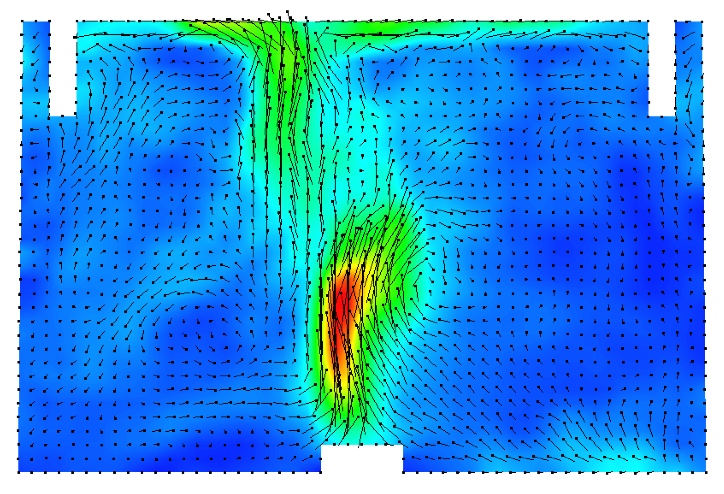Fire R&D Activities in Belgium
Under realistic accidental conditions, parameters such as calorific load, ventilation flow rates, may lead to constraints (temperature, thermal radiation, but also pressure) that would be significantly different (higher or lower) than the testing conditions and may therefore affect the performance of the protection device.
The introduction of performance-based approaches for fire protection (e.g. NFPA 805, ISO 18195 developed for EPR) has increased the need for knowledge about fire behaviour in the specific conditions encountered in nuclear installations, most notably strong confinement and mechanical ventilation.
In this framework, Bel V participates to international research programmes such as OECD/NEA PRISME3 or HEAF2 whose objectives are to obtain experimental data regarding accidental fire scenarios. These data can be used to develop or improve existing fire modeling approaches, that are able to capture more realistically, the behaviour of fire in nuclear facilities, and can be used to perform fire risk analyses and assess the performance of fire-protection provisions (passive or active systems, or combinations of those).
For several years, Bel V has been funding research at the University of Ghent, including post-doctoral and doctoral grants, making good use of the findings of these programmes, most notably the PRISME series.
The best example of this complementary research is the investigation of oscillatory fire behaviour using both advanced computational fluid dynamics and simpler zone-modeling approaches. This oscillatory fire behaviour is a significant example of transient phenomenons observed during PRISME experiments, where a given combination of fire conditions (fire source, ventilation flow rates, temperature levels) leads to alternating phases of high and low activity of the fire, with major variations of the ventilation flow rates and pressure levels in the impacted compartment.
It has been found and demonstrated that this behaviour is the consequence of strong coupling between multiple physical phenomenons such as fuel evaporation/volatilization, the combustion chemical reaction in gas phase or the structure of fluid flows and transport of chemical species inside the compartment [Figure 1]. The ability of fire modelling to capture these complex phenomenons should increase the confidence of the user in the capabilities of the selected model to predict the fire conditions and damage threshold of equipments: e.g. failure of SSCs triggering accidental scenarios in a Fire PSA analysis, or failure of fire protection devices leading to fire propagation and extension beyond compartment boundaries...

The most recent research in this field focuses on phenomenons occurring at the fire source, such as heat transfer and evaporation, as these are often neglected, or over-simplified, in large-scale simulations but play a major role in these transient fire phenomenons and their potential consequences. It is expected that the use of novel mass transfer sub-models in combination with publicly available CFD codes (such as the Fire Dynamics Simulator, FDS) will further improve the use range of fire modeling in risk analysis for fire protection of nuclear facilities, for multiple fuel types (e.g. hydrocarbon pool fires, cables fires...) and ventilation conditions.
Charles Fourneau
Bel V
charles.fourneau@belv.be